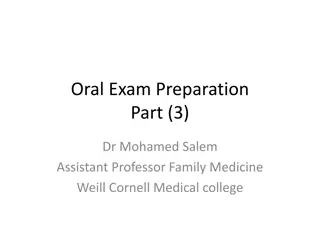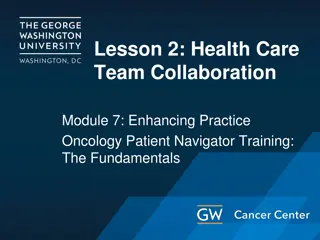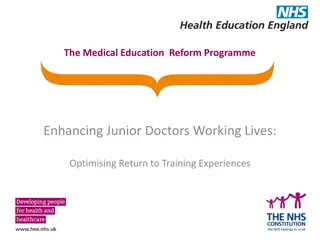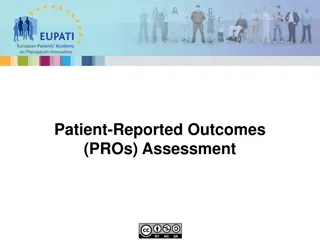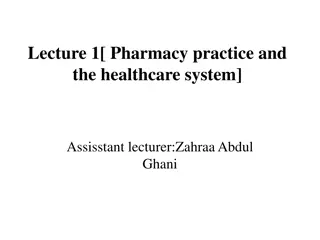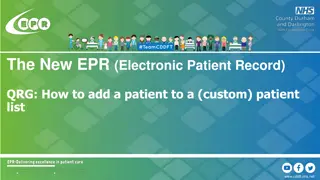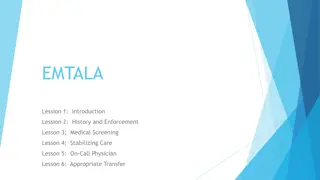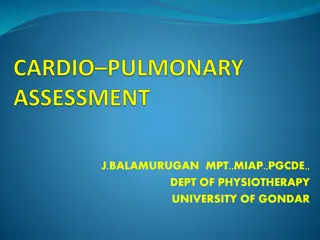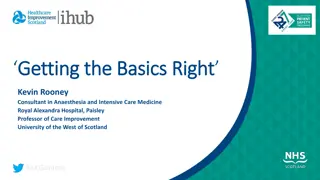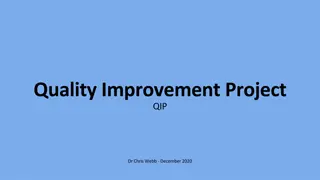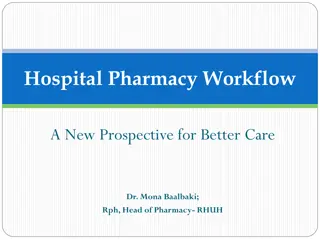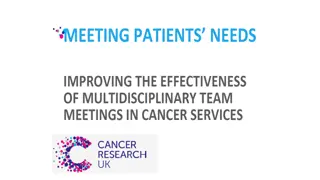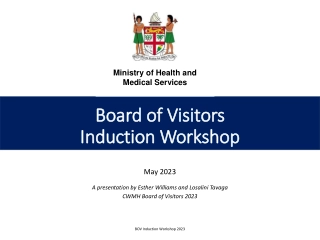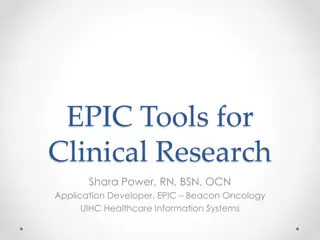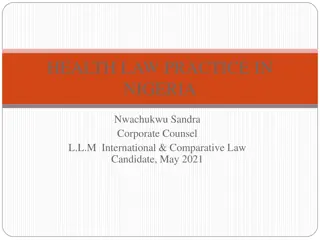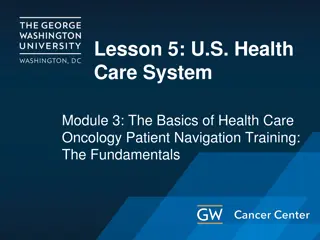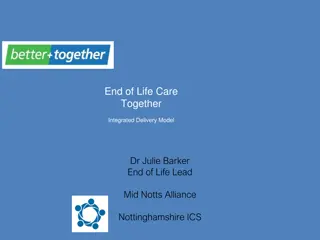Enhancing Patient Care: Tips for Medical Professionals
Learn key strategies to improve patient care, starting from history taking to prioritizing patient comfort and involving their families. Discover the importance of appearance, friendliness, and thorough history components for accurate diagnosis and tailored management in surgery and beyond.
Download Presentation

Please find below an Image/Link to download the presentation.
The content on the website is provided AS IS for your information and personal use only. It may not be sold, licensed, or shared on other websites without obtaining consent from the author. Download presentation by click this link. If you encounter any issues during the download, it is possible that the publisher has removed the file from their server.
E N D
Presentation Transcript
Tariq Altokhais Associate Professor Consultant, Pediatric Surgeon Department of Surgery
History Taking: Key to diagnosis. Help to tailor the management.
Your appearance is important: Proper uniform Lab coats I.D. Etc.
Treat patient as if they are your friend(s) Think of the condition of your patient first and not yours See him walking in and not in the cubicle Allow his relative to be there if the patient wants. Be alert and pay him full attention
History Taking in Surgery There is no difference between medical and surgical history.
Components of Patient History Chief complaint Date and time Present illness Identifying data Past medical and surgical history Source of referral Family History Social History Drug History Source of history Review of body systems
History Personal Data Date and Time Name & File number ( Medical record number) Age Sex Religion Marital status Occupation Residency Who gave the history?
Chief Complaint Main Complaint Duration
Chief Complaint Chief complaint may be misleading Problem may be more serious than the chief complaint .
History of the presenting Symptom (Illness) Elaborate the symptom. Elaborate the system involved. What had been done for the patient?
Past History Dm, Hypertension Bronchial Asthma Bleeding disorders & Sickle cell disease TB, Syphilis, Bilharzias Passage of stones Blood transfusion Operations, Trauma
Family History Similar conditions Parents and close relatives cause of death and serious illnesses. DM, Hypertension Bleeding Disorders& Sickle cell disease Ca Prostate ( others)
Systemic Review Systematic Direct Questions Negative symptoms are as important as positive one. You have to ask about them all, and keep repeat them in each patient, to memorize them well.
Nervous System Nervousness Excitability Tremor Fainting attacks Blackout Fits Loss of consciousness Muscle weakness Paralysis Sensory disturbances Paraesthesiae Changes of smell, Vision or hearing Headaches Change of behavior
Respiratory & Cardiovascular Cough Sputum Haemoptysis Dyspnoea Hoarseness Wheezing Tachypnoea Chest pain Paroxysmal nocturnal dyspnoea Orthopnea Palpations Dizziness Ankle swelling Pain in limbs Walking distance Temperature and color of hands and feet
Alimentary & Abdomen Appetite Diet Taste Swallowing Regurgitation Vomiting Indigestion Vomiting Haematemses Abdominal pain Abdominal Distension Bowel habit Stool Jaundice
Urogenital System Loin pain Symptoms of uremia Headache Drowsiness Fits Visual disturbances Vomiting Oedema of ankles, hands of face Lower urinary tract symptoms ( LUTS) Painful micturirtion Polyuria Color of urine Hematuria Male Infertility history Sexual problems history 1. 2. 3. 4. 5. 6.
Musculoskeletal System Aches or Pain in muscles, bones and joints Swelling of joints limitation of joints movements Weakness Disturbance of gait
Social History & Habits Detailed marital status Living accommodation Occupation Travel abroad Leisure activity Smoking Drinking Eating habits
Sensitive Topics Alcohol or drug use Physical abuse or violence Sexual issues
Sensitive Questions Guidelines Respect patient privacy Be direct and firm Avoid confrontation Be nonjudgmental Use appropriate language Document carefully Use patient s words when possible
Drug History and allergy The drugs the patient taking specially: Insulin, Steroids and contraceptive pills Allergy to any medications
Special Challenges Silence Overly talkative patients Patients with multiple symptoms Anxious patients
Special Challenges False reassurance Avoid early reassurance or over reassurance Unless it can be provided with confidence
Common symptoms Pain 1. Site 2. Time & mode of onset 3. Duration 4. Severity 5. Nature ( Character) 6. Progression of pain 7. The end of pain 8. Relieving factors 9. Exaggerating (Exacerbating) factors 10. Radiation 11. Cause
History of a lump or an ulcer Duration ( when was the first time noticed) First symptom ( how the patient noticed it) Other symptoms Progression ( change since notice) Persistence ( has it ever disappear or healed) Any other lumps or ulcers Cause







